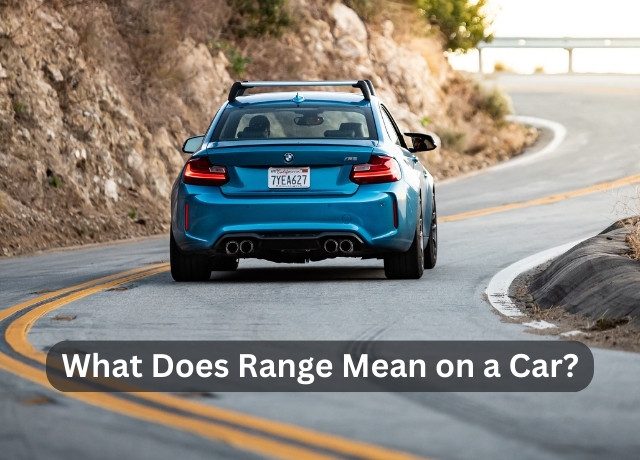Table of Contents

An automobile’s range refers to how far it can travel on a full tank of fuel or a fully charged battery before refueling or charging. Understanding the efficiency and performance of gasoline, hybrid, and electric vehicles (EVs) requires understanding this concept.
Here, we will explore the fuel range meaning for these different types of cars, as well as how they can be impacted by factors like driving style, speed, and weather conditions.
Our knowledgeable team will also provide insights into how to maximize your vehicle’s range, ensuring you get the most out of every charge and fill-up. So, sit back, relax, and prepare for an insightful journey into the fascinating world of range on a car.
What Does Range Mean On A Car?
The term ‘range’ in the automotive industry refers to the distance that can be traveled by a vehicle without refueling or recharging it.
No matter if it is a gasoline-powered car or an electric vehicle (EV), this applies universally.
The range of gasoline cars is determined by their fuel efficiency and fuel tank capacities, while the range of electric vehicles depends on the battery capacity and the vehicle’s energy consumption rates.
Drivers are typically provided with a clear indication of the approximate range of the car on the dashboard, which shows how far the vehicle can travel before requiring a recharge or refueling.
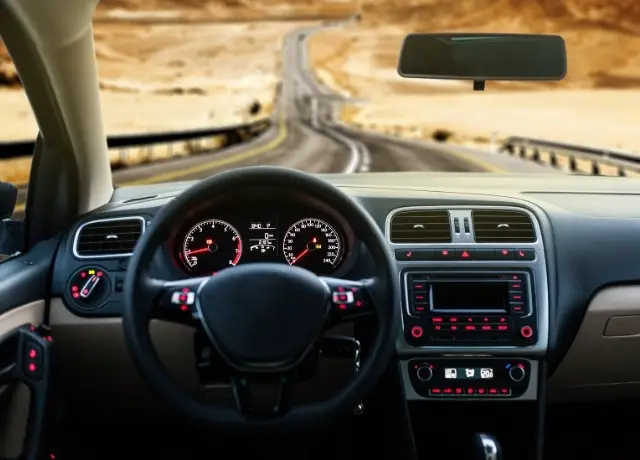
What Is Range In A Gasoline (Or Diesel) Car?
In a gasoline or diesel car, the range in the car refers to the total distance that can be covered on a full tank of fuel before needing a refill. Fuel economy is typically measured in miles per gallon (mpg) or liters per 100 kilometers (L/100km), which is a relatively straightforward calculation.
A car’s Electronic Control Unit (ECU) estimates how much fuel is left based on how large the tank is and how fuel-efficient it is. To gather this information, a float in the fuel tank drops with the level of fuel, increasing the resistance in an electrical circuit and moving the dashboard gauge.
By dividing the distance traveled by the amount of fuel used, the range of gas and diesel cars can be calculated.
Fuel Economy= Distance Traveled/Fuel Used
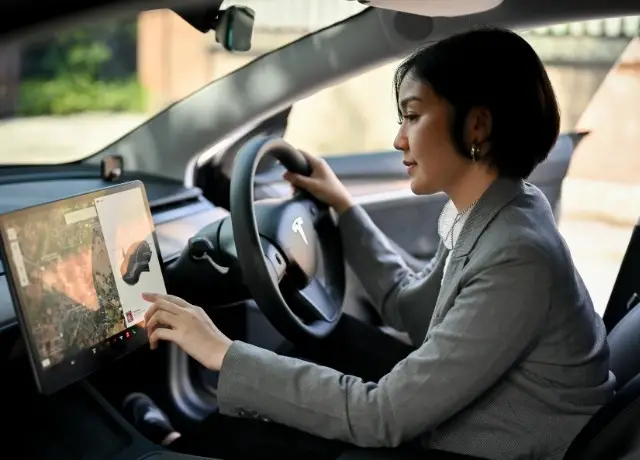
What Is Range In An Electric Car?
Electric vehicles (EVs) are defined by their range, which is determined in the same manner as gasoline or diesel vehicles, but with electricity instead of fuel as the power source.
This data is then displayed on the dashboard for the driver’s convenience, much like how the onboard computer on your smartphone shows the remaining battery charge.
It is also calculated in terms of miles per gallon equivalent (MPGe) or miles per kilowatt-hour (kWh), which is an electric car’s version of the conventional fuel economy metric.
Using this formula, we can calculate how efficiently the car uses the stored electrical energy. Therefore, the mileage divided by the charge discharged allows us to estimate the efficiency of an electric car.
Efficiency = Distance Traveled/Charge Discharged

What Is Range In A Hybrid Car?
A hybrid vehicle’s range measures how far it can travel using its two fuel sources: gasoline and electricity, before it needs to be refueled or recharged. Hybrid vehicles are unique because they combine the principles of conventional gasoline cars and electric cars in their operation.
To estimate the vehicle’s overall range, the vehicle’s Electronic Control Unit (ECU) calculates how much fuel and battery charge is left.
Fuel economy, as measured in miles per gallon or liters per 100 kilometers, and electric efficiency (measured in miles per gallon equivalent or miles per kilowatt-hour), are both taken into account in this formula.
After this data is collected, the ECU uses it to optimize the use of the two energy sources, switching between them or combining them when necessary to enhance efficiency and performance.
Hybrid vehicles, therefore, have a greater range than pure electric vehicles and can match or even exceed the range of conventional cars, making them popular choices for those seeking to balance efficiency, range, and environmental impact.
Factors That Affect Range:

Bad Driving Habits:
Driving habits significantly affect the range of the car. Smooth, controlled driving with gentle use of the throttle and brake pedals is key to maximizing range.
To increase the vehicle’s range, the steering must be conscious, minimal, and smooth.
Abrupt steering and aggressive acceleration and deceleration can result in excessive fuel or energy consumption.
Underinflated Tires:
Underinflated tires create more drag or resistance on the road, so the engine or motor has to work harder to propel the vehicle, which lowers a vehicle’s range.
The result of this is a reduction in fuel efficiency for traditional cars as well as a reduction in battery life for electric vehicles.
To maximize the range and safety of the vehicle, it is important to check and maintain the correct tire pressure regularly.
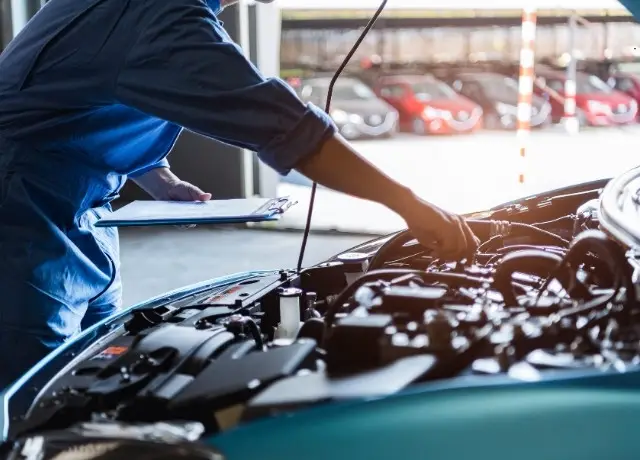
Poor Vehicle Maintenance:
The range in the car can suffer if you neglect regular maintenance. For example, if you do not change the engine oil regularly, you will experience friction and heat buildup, resulting in decreased fuel economy.
Additionally, low coolant levels can result in overheating of engines, increasing fuel consumption.
Maintaining the optimal performance and range of the car can be achieved by performing routine maintenance checks like oil changes and fluid checks.
Electrical Features Used:
The range on a car can be significantly reduced by in-car appliances such as air conditioning, heated seats, and entertainment systems, which consume energy directly from the vehicle’s battery.
It is important to minimize the use of such appliances when not necessary, as they put extra strain on the alternator. This in turn leads to reduced fuel efficiency and less range in a car.
While turning off unnecessary appliances may improve fuel efficiency slightly, it should never compromise the driver’s or passengers’ safety or comfort.
Weight of Batteries (for EVs):
Electric vehicles (EVs) often have heavier batteries, which can result in higher power consumption and lower efficiency. Heavier batteries increase the overall weight of the vehicle, resulting in a shorter range.
Furthermore, larger batteries may require longer charging times, potentially increasing electricity costs. Therefore, optimizing an EV’s range requires balancing battery size and weight.

Fast Driving:
During a vehicle’s range, speed plays an important role. Driving at high speeds increases air resistance, which in turn requires more energy to maintain the speed, thus reducing fuel efficiency.
It is recommended that vehicles travel between 50-60 mph to maximize the range. However, safety should always take precedence regardless of fuel efficiency.
Problems With Coolant:
When a metal part of an engine gets too hot, it loses efficiency, which can result in a decrease in fuel economy and the range of your vehicle.
It is also critical to monitor coolant levels and engine temperature regularly for battery-powered vehicles, which require proper cooling to perform optimally.
Engine Oil Is Low:
It’s important to regularly check the engine oil level and top it back up if it’s low. Low engine oil can cause increased friction within the engine, leading to reduced fuel economy and a lower range of your vehicle.
Furthermore, engine oil should be changed every year or 10,000 miles, whichever comes first.

You Should Avoid Certain Routes:
It is also possible to maximize the range by planning a route efficiently. By minimizing unnecessary acceleration and deceleration, drivers can reduce the fuel their vehicles use.
It is possible to maximize the range by choosing routes with:
- Less Traffic
- Fewer Stops
- Smoother Roads
Cold Temperatures:
In extremely cold temperatures, electric vehicles’ range can be reduced by up to 35%, since batteries are less efficient in cold conditions and energy may be diverted to heating the vehicle.
By using home charging stations, the battery can be warmed up without significantly draining its charge, thereby mitigating this range reduction.
How To Make The Most Out of Your Vehicle’s Range?
Regularly Charge Your EV:
To maximize the range of electric vehicles, it’s best to maintain a regular charging schedule. Battery levels should be kept between 20 and 80 percent.
Consistent charging ensures the battery has sufficient energy for your journeys, as it helps avoid extreme charging states that can stress the battery and reduce its lifespan.
Prepare In Advance:
In addition to planning your route ahead of time, driving uphill or on rough terrain can significantly reduce the range of your vehicle. Fuel and battery power are reduced when driving uphill and on rough terrain.
You can extend the range of your car by avoiding such terrains and choosing smoother, flatter roads whenever possible.
Brake Using Regenerative Technology (if possible):
The regenerative braking feature is available in some hybrid and electric vehicles and can maximize the range.
The electric motor can generate electrical energy during braking when this feature is engaged, which allows some of the heat energy lost during braking to be recovered.
To maximize the benefits of regenerative braking, smooth driving, and gradual braking are essential, as sudden braking can limit the efficiency of the system.
Lighten Your Load:
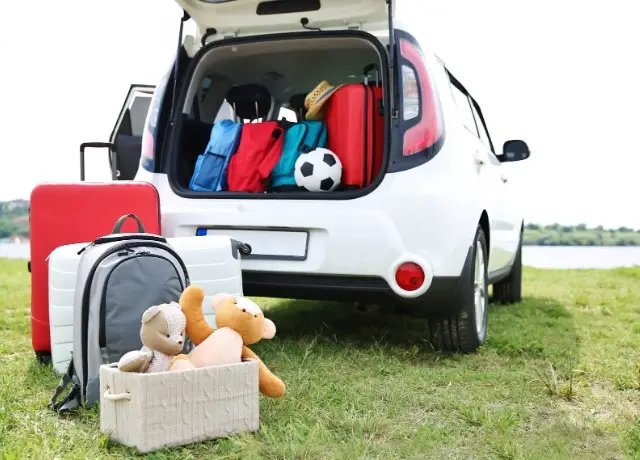
Unnecessary items in your car can add extra weight, forcing the engine or battery to work harder.
Your vehicle’s fuel efficiency and range can be extended by removing unnecessary items and traveling light.
Furthermore, you can further improve efficiency and range by keeping your windows up while driving at high speeds.
Myths That Are Commonly Believed:
Tires Shouldn’t Be Overinflated:
There is a common myth in the automotive world that overinflating tires will increase fuel economy. Properly inflated tires can indeed help you achieve optimal fuel efficiency, but excessive inflation can be detrimental.
When tires are overinflated, the vehicle’s handling is compromised, the risk of a tire blowout increases, and the rubber tread wears unevenly, leading to premature tire replacement.
It is often more expensive to fix or replace damaged tires than to increase mileage by a small amount.
Opening Windows vs. Using Air Conditioning:
Even though opening windows rather than using air conditioning might have been true for older cars, most modern vehicles have highly efficient air conditioning systems.
When driving at high speeds, these systems can sometimes be more fuel-efficient than driving with the windows down, since open windows can significantly increase wind resistance.
Fuel Economy and Overdrive:
The belief that turning off overdrive can save fuel is also a common myth. Overdrive is the highest gear in a car, and its primary purpose is to reduce engine speed at high speeds.
If you are traveling on a freeway or highway, you usually don’t need to turn off the overdrive, unless you are towing a heavy load or driving on steep hills.
Range Means Miles To Empty, right?
The range is usually the number of miles (or kilometers) a vehicle can travel before it runs out of fuel or battery charge – in other words, “miles to empty”.
Fuel efficiency or energy consumption rates of the vehicle, along with the amount of fuel or energy remaining, are used to estimate the range.
The actual range can vary depending on driving conditions and habits, so it’s important to note that this is an approximation.
Fuel Range Calculation: How Does It Work?
Onboard computer systems calculate the fuel range of a vehicle. In addition to the amount of fuel left in the tank, it also takes into account the average fuel consumption rate, which is affected by driving style, speed, and weather conditions.
In the case of a vehicle that consumes 1 gallon of gas every 30 miles driven and has five gallons left, its estimated range is 150 miles.

What Is The Accuracy Of A Car’s Fuel Range?
A car’s fuel range display can vary in accuracy. While modern cars are designed to provide fairly accurate estimates, factors such as driving habits and environmental conditions can influence them.
The average error in fuel range displays across various car models was 2.3%, with variations ranging from 2.8% to 6.4%, according to a study.
It is therefore important not to rely on fuel range displays as a precise measure, though they can be used as a guide.
Frequently Asked Questions:
How Does A Car’s Range Display Work?
With the remaining fuel or battery charge, the car’s range refers to the estimated distance it can travel.
A vehicle’s fuel economy or energy efficiency is typically calculated based on how much fuel it has left in its tank or battery and how much fuel it has left.
The tool helps drivers estimate when they’ll need to refuel or recharge their vehicles.
What Is The Accuracy of A Car’s Range?
Even though the range display can be helpful, it isn’t always entirely accurate. It calculates the range based on past driving behavior and current conditions, which can vary.
In a study, it was found that the fuel range display may not be as accurate to the mile as you would expect if you drive efficiently on a highway and then enter city traffic.
Therefore, it shouldn’t be relied upon as a precise measurement, although it can provide a ballpark figure.
The Range of A Car: How Do You Find It?
Your vehicle’s range can usually be found on the dashboard display. In some vehicles, you’ll find it under Trip 1 or Trip 2 in the information display. If you’re not sure where to locate it, consult your vehicle’s owner’s manual or ask your dealership for assistance.
Why Does My Car Range Decrease?
Several factors can decrease a car’s range. Changes in driving behavior, such as aggressive acceleration or braking, can result in reduced fuel or energy efficiency, lowering the range.
In the same way, driving uphill or on rough terrain can increase fuel or energy consumption. As a result, the car’s range display may decrease even if you haven’t driven as far as it originally indicated.
Moreover, certain vehicle issues, such as low tire pressure or engine problems, can also reduce a car’s range.
How Is A Car’s Range Calculated and What Factors Can Influence It?
The average fuel consumption rate and the amount of fuel left in the tank are used to calculate a vehicle’s range onboard computer system. Driving style, speed, and terrain influence the fuel consumption rate.
As an example, driving efficiently on highways might extend your range a bit more than driving through stop-and-go city traffic.
It is also possible that the range will be affected by the weather. Cold weather may cause the vehicle to consume more fuel, while hot weather may cause it to evaporate, reducing the range.
For example, underinflated tires can reduce fuel efficiency, resulting in a shorter range. Maintenance can also play a role.
What Is The Accuracy of The Range Displayed On My Dashboard?
Despite being a good estimate, the range displayed on your car’s dashboard isn’t always completely accurate, so it shouldn’t be relied on as an exact measurement.
As a result of past driving behavior, the range may not reflect future driving conditions accurately. Your actual range could be less than what you see if you’ve been driving on the highway and then switched to city traffic.
As a result, it’s a good idea to plan to refuel or recharge well before the range indicates you’ll run out.
Conclusion:
In conclusion, a car’s range is an estimate of the distance it can travel on its remaining fuel or charge. This is calculated with the help of an onboard computer system that considers the amount of fuel left and the average fuel consumption rate.
In addition to driving style, speed, weather conditions, and vehicle maintenance, several factors can affect the range in the car.
The range estimates provided by modern cars are not foolproof, so they should be used as a guide rather than an exact measure, even though they are equipped with relatively accurate capabilities.
You should always recharge or refill your vehicle before it runs out of range to avoid inconvenience or even danger.

